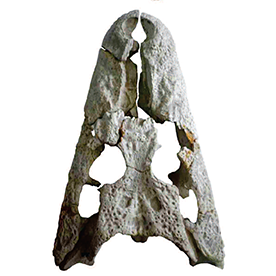THE ALLIGATOROIDEA OF ARGENTINA: AN UPDATE OF ITS FOSSIL RECORD
DOI:
https://doi.org/10.5710/PEAPA.15.06.2015.103Abstract
The fossil record of Alligatoroidea in Argentina is mainly represented by Caimaninae alligatorids. This lineage recorded two impor- tant moments in its natural history, one at the beginning of the Paleogene (Late Paleocene–Middle Eocene) and the other in the Neogene (Late Miocene). The most ancient record of alligatoroids in South America comes from the Early Paleocene of Patagonia. It includes basal forms of caimanines such as Necrosuchus ionensis, Eocaiman palaeocenicus, Eocaiman cavernensis, and probably a new species of alligatoroid, which provide key morphological information on the evolutionary and biogeographic history of these crocodylians. Another important moment of the evolutionary history of caimanines is the diversification of the lineage observed during the Miocene. Although there is some isolated cranial material of caimanines from the Late Miocene of northwestern Argentina, the most abundant and diverse fossil Miocene material comes from the northeast, from a level informally called “Conglomerado Osífero”. Two genera of caimanines are known from this stratigraphic level (Caiman and Mourasuchus) with at least five valid species. Here we present an update of the knowledge of Cenozoic alligatorids of Argentina, as a tribute to Zulma Gasparini for her invaluable contribution to the understanding of the crocodilian evolution in South America.

Downloads
Published
Issue
Section
License
Copyright (c) 2015 Publicación Electrónica de la Asociación Paleontológica Argentina

This work is licensed under a Creative Commons Attribution-NoDerivatives 4.0 International License.
Authors retain copyright and grant the journal right of first publication with the work simultaneously licensed under a Atribución/Reconocimiento 4.0 Internacional that allows others to share the work with an acknowledgement of the work's authorship and initial publication in this journal.















